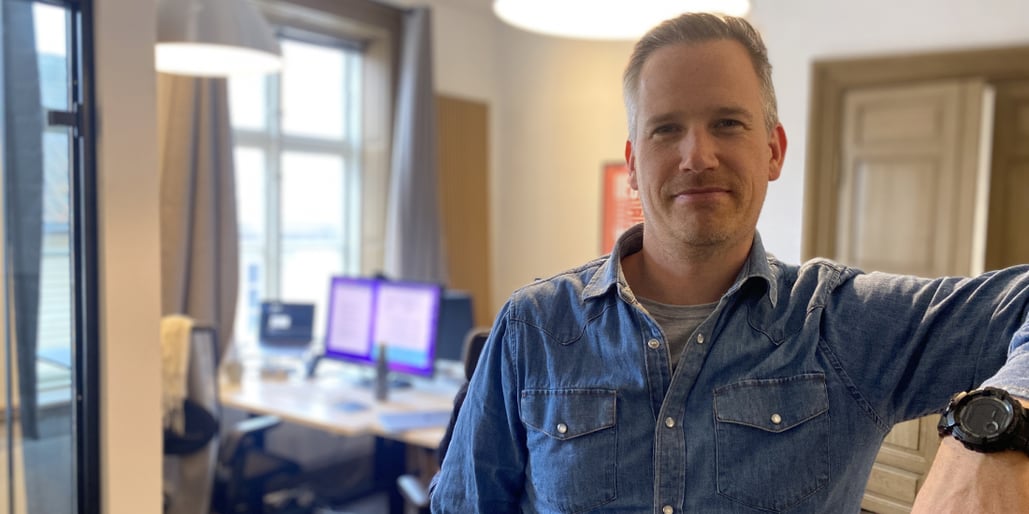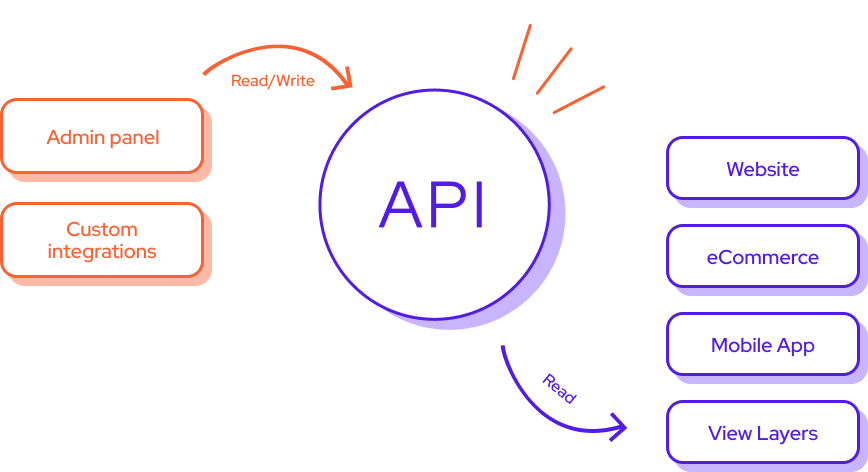
Drupal is an established CMS and it has been around for years. Usually, it is used with a monolithic, traditional structure. This means that both the front-end and back-end are on one server. You create content in a Drupal back-end and it is then displayed on a Drupal front-end, similarly to other monolithic solutions. However, Drupal can be used as a headless CMS as well.
Traditional Drupal CMS
Drupal is an open-source content management system, first introduced in 2001. Since then it has gained a large user base as well as a vibrant community of developers. It's currently available under Drupal 9 (following the Drupal 7 and Drupal 8 updates), but the Drupal 10 version is planned to be released in December of 2022. Drupal is probably the the best Enterprise-level CMS out there, used by a lot of high-profile companies and teams like Tesla, Oxford University or Nokia.
As a content management system, Drupal's core principle is flexibility. Besides the usual CMS features like content creation, editing and publishing its modular structure enables users to build more dynamic web experiences for the end user.
With a monolithic Drupal CMS both the front-end and back-end are on the same server and managed with the Drupal back-end. This traditional approach has a lot of benefits, which is why it has been used for creating content and websites for years. However, in the recent years, there's been more and more new distribution channels which can make it hard for content teams to stay on top of their game.
The Rise Of Headless Content Management Systems
The ever-changing customer landscape is the reason why headless CMS exists and why it's been steadily gaining popularity over the past few years. Customers are consuming content over various different channels, simultaneously. There's also new channels popping up all the time, for example - smart home devices. This means that businesses need to adapt their content to be distributed across those channels in order to reach their target audiences.
With monolithic content management systems this can be challenging and resource-heavy. Which is why the decoupled approach has been getting more and more attention. It enables businesses to easily create, edit and publish content across different channels without the need to use separate CMS systems for each channel.
What Does A Headless Drupal Look Like?
To fully understand the benefits of headless, you need to first understand how it works. The structure is quite different from a monolithic CMS. The system doesn’t have a front-end layer for the users to read the content. There’s only the admin panel (and some custom integrations if necessary) in which you create, edit and manage the content. Then, the content is distributed through API to any channels you want. This can be your website, eCommerce store, a mobile app or any other medium. This structure is precisely what makes headless so popular right now. It doesn’t constrain the content in any way, instead allowing you to better leverage different distribution channels.

To illustrate how it works, let’s say your company owns three different native mobile apps for iOS, Android and Windows Phone as well as a web application.
With a monolithic CMS you would most likely need to upload the same content separately for each of these platforms. If you had a headless CMS, however, you can add the content once and it would then be distributed to each platform via API. This saves you time and also helps eliminate human error when inputting,
for example, an important update for the users or a special offer. With a decoupled Drupal setup you get the usual benefits of Drupal, which is very significant if you already use Drupal at your company, as well as all the benefits of a headless CMS.
The Benefits Of A Decoupled Drupal CMS
As a CMS, Drupal has a lot of features that make it easy and pleasant to use. That's why it's so understandable if you're not willing to let go of the well-known Drupal backend, even if a headless solution seems to be a great fit for you and your team. The good news here is that you don't have to leave your Drupal set up behind if you want to go headless. Your current setup can be brought into the API-first, headless world, enabling you to get all the benefits of Drupal as well as all the benefits of headless.
When & Why Should You Use A Headless CMS?
The most important feature of headless is that it’s not only limited to one content distribution channel like a website, thanks to the use of API. You can use a headless CMS for all your channels whether it be a mobile app, a web app or an intranet. But when is it really worth it to consider switching out your monolithic Drupal CMS to a headless Drupal set up?
Improve your digital product’s user experience
Choosing a headless Drupal CMS is a great idea if your business goals depend on the user experience your customers have with your digital product. That’s because with a headless CMS you can control the frontend of your digital product and the presentation of your content entirely. You can choose the tech stack and there’s no limitations, unlike with a monolithic CMS. If you already have an ecosystem of digital products, there’s no point in migrating all that to a new CMS. A much better idea would be to implement a headless solution that can work with your existing infrastructure. That will ensure you can still maintain a great user experience, while making it easier for you and your team to create and manage content.
Reach customers across new channels & emerging touchpoints
A headless Drupal CMS is also perfect if you’d like to experiment with new content distribution channels and emerging touchpoints to reach new audiences. It enables you to quickly get content out to any platform. A great example here would be smart devices like Alexa or Google Home. They have been steadily gaining popularity over the last few years and are an important part of many users’ daily lives. A lot of companies use a headless CMS to bring their content to such devices or to process orders placed using them. With a monolithic CMS that would require much more implementation work or might be impossible entirely, depending on specific tech requirements of the CMS and the platform.
Increase your digital product’s security
Another reason a lot of companies are choosing headless is because it can help increase security of their digital products. A lot of monolithic CMS solutions use third-party plugins and extensions, which can increase security threats. With a headless Drupal set up you have much more control over the infrastructure and can ensure that the solution is secured properly. The main reason headless is more secure, is that the backend server can not be targeted by hackers. Only the frontend server is reachable to the outside world.
Manage content across your native mobile apps
A headless Drupal CMS is also ideal for managing content across multiple native mobile apps or if you have a single mobile app and your plans for the future involve expanding. While it can also be used with cross-platform applications made, for example, in Flutter or React Native, it’s especially useful for native apps. You and your team can manage content all in one place, instead of having different tools for each operating system, and the developers still have full control over the native code.
Manage content for a custom intranet
A lot of companies operate using custom or customised intranets. Solutions like these can really benefit from a headless Drupal CMS, because it makes it easier to scale internal ecosystems as well as maintain them. If you use a headless CMS you can freely expand and modify your intranet and keep it within your company tech stack.
Is A Headless Drupal Set Up For You?
We understand that it's a hard decision to make. And while we can't provide you with a simple yes or no answer here, you can read more about headless solutions in our latest eBook, available to download here, or contact us to discuss your specific situation.

Per Andre Rønsen
Per André is a Co-founder at Frontkom with 14+ years of experience as CTO and CIO. He has extensive experience with people and technology for both private and public sector. He is also co-founder of Dignio Health Tech, SMSpay, Web3 enthusiast and Co-pastor of 3:16. Per André writes about CMS, headless, awesome tech and team composition and efficiency.

